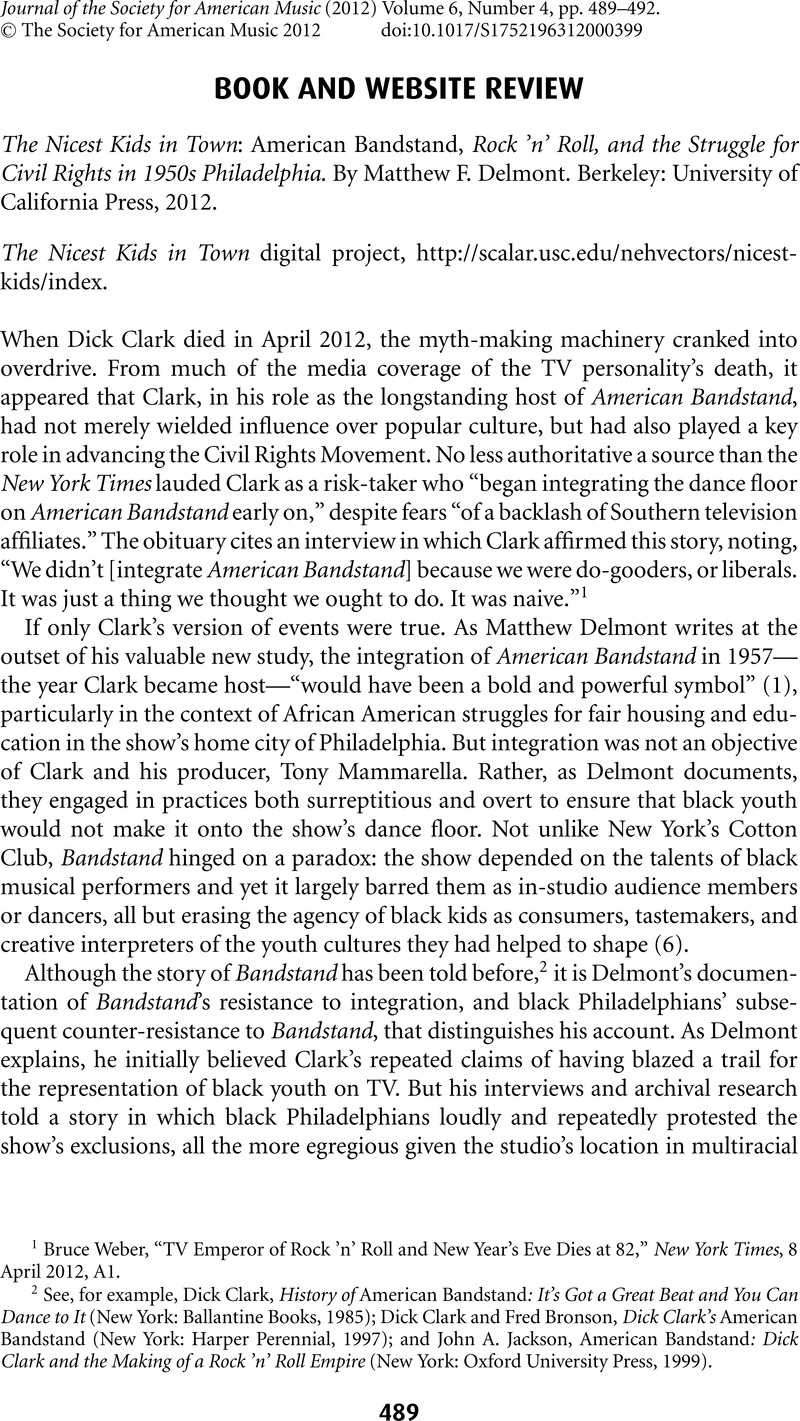No CrossRef data available.
Published online by Cambridge University Press: 30 November 2012

1 Bruce Weber, “TV Emperor of Rock ’n’ Roll and New Year's Eve Dies at 82,” New York Times, 8 April 2012, A1.
2 See, for example, Clark, Dick, History of American Bandstand: It's Got a Great Beat and You Can Dance to It (New York: Ballantine Books, 1985)Google Scholar; Clark, Dick and Bronson, Fred, Dick Clark's American Bandstand (New York: Harper Perennial, 1997)Google Scholar; and Jackson, John A., American Bandstand: Dick Clark and the Making of a Rock ’n’ Roll Empire (New York: Oxford University Press, 1999)Google Scholar.
3 For an example of how these functions can be used to annotate musical texts, see “Breaking Down ‘Blind Alley,’ Part I,” by O-Dub (Oliver Wang) on the blog Soul-Sides.com, http://soul-sides.com/2012/05/breaking-down-blind-alley-part-1/.